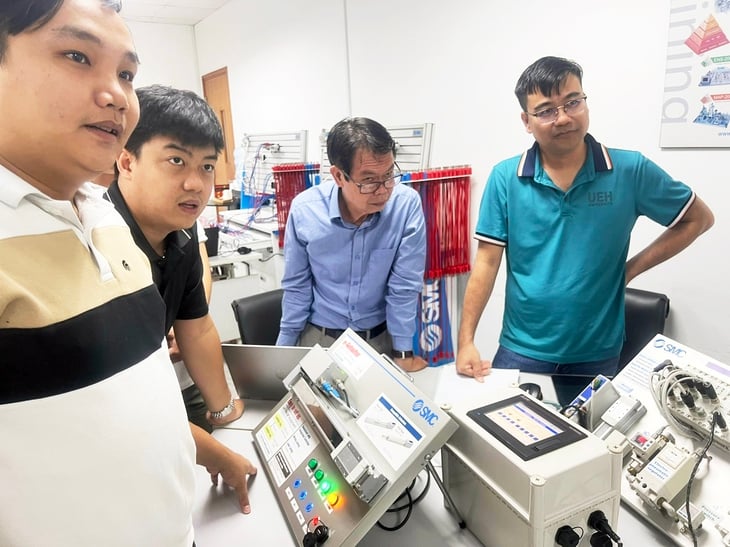
Ho Chi Minh City University of Economics is a rare unit with a high research expenditure ratio of more than 37% of total expenditure - Photo: TRUONG THINH
According to statistics, by 2024, the country will have 13 universities with revenue of over 1,000 billion VND/year, including 9 public universities and 4 private universities. Most of the public universities in this group are top universities with research orientation.
Spend the most on salary
Public financial reports show that the main source of income for these schools is still mainly tuition fees. The difference between revenue and expenditure ranges from several hundred billion to more than 400 billion VND per year. However, what makes the public interested is how this "huge" expenditure is allocated, and especially whether research-oriented schools really invest heavily in scientific research.
In 2024, the total expenditure of Hanoi University of Science and Technology is more than 1,284 billion VND, of which the salary and income of lecturers is more than 609 billion VND, the expenditure for training is more than 331 billion VND, the expenditure for research is more than 116 billion VND, the expenditure for student support is more than 77 billion VND... The difference between the school's revenue and expenditure in the past year is more than 218 billion VND.
Total operating expenses of the University of Technology (Ho Chi Minh City National University) are over 947 billion VND. The school spends nearly 510 billion VND on salaries; over 338 billion VND on facilities and services (over 140 billion VND on training, over 126 billion VND on research...); over 72 billion VND on student support.
Last year, the total operating expenses of the University of Medicine and Pharmacy in Ho Chi Minh City was 875 billion VND, of which the majority was spent on facilities and services with 508 billion VND (302 billion VND for training, 105 billion VND for research...); 246 billion VND for salaries; 65 billion VND for student support. The difference between the school's revenue and expenditure was 249 billion VND.
Total operating expenses of Ho Chi Minh City University of Economics in 2024 are more than 1,459 billion VND. The difference between the school's revenue and expenditure last year was more than 427 billion VND.
The school spent more than 617 billion VND on salaries, more than 751 billion VND on facilities and services (of which more than 64 billion VND was spent on training, more than 547 billion VND on research), and more than 90 billion VND on student support.
According to the 2024 annual report, Can Tho University's total revenue in the year was more than 1,083 billion VND (difference in revenue and expenditure was more than 211 billion VND).
Of the total of more than 871 billion VND spent by the school last year, more than 371 billion VND was spent on salaries; more than 351 billion VND was spent on facilities and services (more than 233 billion VND spent on training, more than 57 billion VND spent on research...); more than 92 billion VND was spent on supporting learners.
The total operating expenses of Ho Chi Minh City University of Technical Education last year were 976 billion VND. The school spent 467 billion VND on salaries; 369 billion VND on facilities and services (27 billion VND on training, 23 billion VND on research, 3 billion VND on staff development...); 71 billion VND on student support.
Total expenditure of Ton Duc Thang University is more than 1,033 billion VND, of which expenditure for salaries and income of lecturers is nearly 493 billion VND; expenditure for facilities and services is more than 465 billion VND (expenditure for training is nearly 97 billion VND, expenditure for research is 108 billion VND...); expenditure for supporting learners is more than 49 billion VND. The difference between the school's revenue and expenditure last year was more than 190 billion VND.
National Economics University and Ho Chi Minh City University of Industry are also among the schools with revenue of thousands of billions in recent years, but have not yet publicly disclosed their finances for 2024.
A rare bright spot
Most of the schools with revenue of thousands of billions are top schools, with a clear research orientation. However, financial data shows that the proportion of spending on research is still quite low compared to the total annual expenditure (most schools spend less than 15% on scientific research).
At Hanoi University of Science and Technology, research expenditure accounts for only about 9% of total expenditure. Ho Chi Minh City University of Technology has a research expenditure ratio of about 13%, Ho Chi Minh City University of Medicine and Pharmacy about 12%.
Meanwhile, Ton Duc Thang University also has a research expenditure level of around 10%, Can Tho University spends about 6.55% of total expenditure on investment in scientific research activities, and Ho Chi Minh City University of Technical Education spends about 2.3% on research.
Notably, among these, Ho Chi Minh City University of Economics stands out as a rare unit with a high research expenditure ratio of more than 37% of total expenditure, showing a clear priority for research activities and knowledge transfer.
What is special is that the school's revenue from science and technology reached more than 520 billion VND, accounting for 27% of total revenue, the highest level in the group of schools with current revenue of thousands of billions.
Thus, compared with international practice, research expenditure at research-oriented schools often accounts for 25 to 40% of the total budget, which is still modest.

Graphics: TAN DAT
Need for reinvestment strategy
Education experts say that positive financial results of hundreds of billions of dong at many public universities show that financial autonomy is increasingly evident in the current Vietnamese higher education system.
Autonomy gives schools more flexibility in investment, but to become a true research university, a long-term reinvestment strategy for science, technology and innovation is needed.
Increasing the proportion of spending on research not only improves academic capacity, but also contributes to affirming the position of Vietnamese universities on the regional and international education map.
Source: https://tuoitre.vn/dai-hoc-nghin-ti-chi-tien-ra-sao-20251007220202311.htm


![[Photo] Prime Minister Pham Minh Chinh attends the World Congress of the International Federation of Freight Forwarders and Transport Associations - FIATA](https://vphoto.vietnam.vn/thumb/1200x675/vietnam/resource/IMAGE/2025/10/08/1759936077106_dsc-0434-jpg.webp)




![[Photo] Prime Minister Pham Minh Chinh inspects and directs the work of overcoming the consequences of floods after the storm in Thai Nguyen](https://vphoto.vietnam.vn/thumb/1200x675/vietnam/resource/IMAGE/2025/10/08/1759930075451_dsc-9441-jpg.webp)


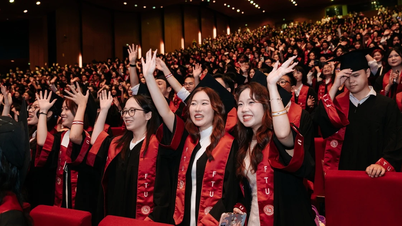



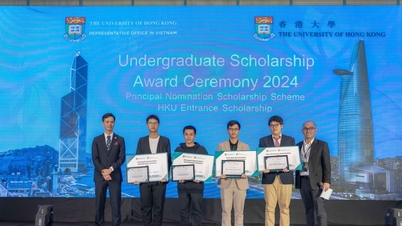


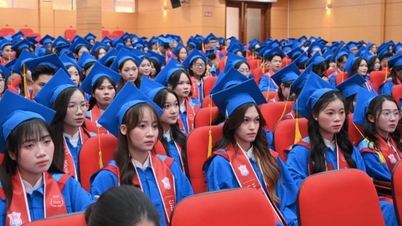


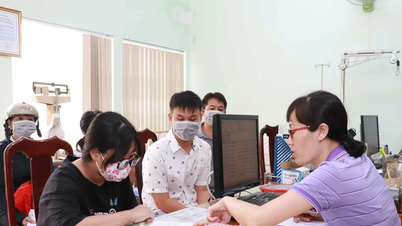











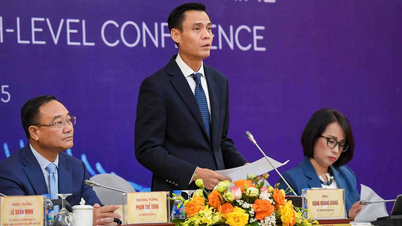





![[Photo] Closing of the 13th Conference of the 13th Party Central Committee](https://vphoto.vietnam.vn/thumb/1200x675/vietnam/resource/IMAGE/2025/10/08/1759893763535_ndo_br_a3-bnd-2504-jpg.webp)
































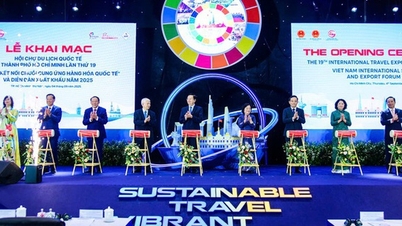










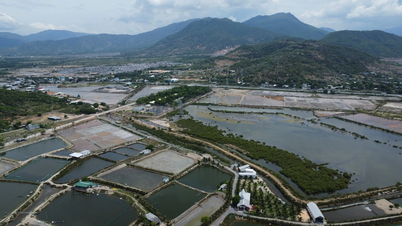


















Comment (0)